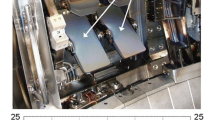Abstract
The electron cyclotron (EC) heating and current drive (H&CD) system developed for the ITER is made of 12 sets of high-voltage power supplies feeding 24 gyrotrons connected through 24 transmission lines (TL), to five launchers, four located in upper ports and one at the equatorial level. Nearly all procurements are in-kind, following general ITER philosophy, and will come from Europe, India, Japan, Russia and the USA. The full system is designed to couple to the plasma 20 MW among the 24 MW generated power, at the frequency of 170 GHz, for various physics applications such as plasma start-up, central H&CD and magnetohydrodynamic (MHD) activity control. The design takes present day technology and extends toward high-power continuous operation, which represents a large step forward as compared to the present state of the art. The ITER EC system will be a stepping stone to future EC systems for DEMO and beyond.
The development of the EC system is facing significant challenges, which includes not only an advanced microwave system but also compliance with stringent requirements associated with nuclear safety as ITER became the first fusion device licensed as basic nuclear installations as of 9 November 2012.
Since the conceptual design of the EC system was established in 2007, the EC system has progressed to a preliminary design stage in 2012 and is now moving forward toward a final design.


















Similar content being viewed by others
References
M. Henderson, et al., “The Physics Basis establishing the ITER EC H&CD System Design” submitted Physics of Plasmas, 12 August 2014.
F. Gandini et al., The EC H&CD transmission line for ITER, Fusion Science and Technology, vol.59, May 2011.
T. Omori, et al., Progress in the ITER electron cyclotron heating and current drive system design, Fusion Eng. Des., 2014
D. Purohit, et al., in Proceedings of the 18th joint workshop on electron cyclotron emission and electron cyclotron resonance heating, Nara, Japan (2014).
Arrêté du 7 février 2012 fixant les règles générales relatives aux installations nucléaires de base (Order dated 7 February 2012 relating to the general technical regulations applicable to INB).
V. Erckmann et al. Electron cyclotron heating for W7-X: Physics and Technology. Fusion Science and Technology, 52(2):291-312, 2007.
S. Kubo et al., Application of high power and long pulse gyrotrons to LHD plasmas, 9th strong microwaves and terahertz: sources and application, July 24-30,2014.
T. Kobayashi et al., Gyrotron development for high-power, long-pulse electron cyclotron heating and current drive at two frequencies in JT-60SA and its extension toward operation at three frequencies, Nucl. Fusion, 55 (2015) 063008.
J. Lohr et al., Electron cyclotron heating and high power millimeter wave transmission system status and upgrades on DIII-D, Infrared, Millimeter, and Terahertz waves (IRMMW-THz), 2014 39th International Conference.
D. Wagner et al., Operation and upgrade of the ECRH system at ASDEX upgrade, Millimeter, and Terahertz waves (IRMMW-THz), 2014 39th International Conference.
Acknowledgments
The authors would like to thank the numerous scientists and engineers involved in the EC system design development and procurement. This includes those from the five participating domestic agencies (Europe, India, Japan, Russia and the USA) and the associated laboratories in each of these ITER partners. In addition, the authors would like to thank the scientists working and exploiting the EC systems on ASDEX upgrade, DIII-D, FTU, JT-60U, KSTAR, LHD, SST-1, TCV, Tore Supra and W7X, in addition to the JET, ORNL and PPPL scientists.
The views and opinions expressed herein do not necessarily reflect those of the ITER Organization.
Author information
Authors and Affiliations
Corresponding author
Rights and permissions
About this article
Cite this article
Darbos, C., Albajar, F., Bonicelli, T. et al. Status of the ITER Electron Cyclotron Heating and Current Drive System. J Infrared Milli Terahz Waves 37, 4–20 (2016). https://doi.org/10.1007/s10762-015-0211-3
Received:
Accepted:
Published:
Issue Date:
DOI: https://doi.org/10.1007/s10762-015-0211-3




